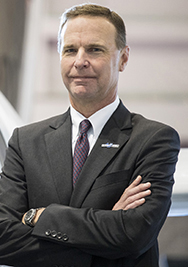The National Business Aviation Association (NBAA) recently marked the one-year anniversary of its Advanced Air Mobility (AAM) Roundtable, a 12-month period characterized by significant progress on a number of important milestones for the sector.
AAM uses electric vertical takeoff and landing aircraft to move people and cargo between places, and can be powered by hybrid electric systems, batteries or potentially hydrogen fuel cells. NBAA launched the AAM Roundtable last year to provide a forum for high-level policy discussions with sector leaders to chart a course for the integration of AAM technologies into U.S. airspace and transportation infrastructure.
AAM has the potential to revolutionize mobility in both urban and rural communities. These aircraft, some of which are nearing FAA certification, will bring accessibility to cities, underserved communities and geographically distant regions without existing access to public transit systems.

“The AAM Roundtable has been very successful in connecting key policy makers with this exciting industry,” said NBAA President and CEO Ed Bolen. “We look forward to continuing our work with government and business stakeholders to advance this important technology, which represents a transformation in the on-demand air-mobility industry NBAA has been proud to champion for over seven decades.”

Hillwood Aviation President and CEO Matt Byrd, AAM Roundtable chair, agreed with Bolen’s assessment. Byrd serves on NBAA’s Board of Directors, which works to promote aviation-related enterprises, including those related to autonomous flight.
“The pace of innovation and change is unfolding faster than ever in aviation, including the pioneering developments underway in the AAM sector,” Byrd said. “NBAA’s AAM Roundtable is leading the way in charting a roadmap for the future of this groundbreaking mode of transport.”
NBAA and the AAM Roundtable have worked with Congress and federal agencies to help address challenging infrastructure and operational issues.
In December, House Aviation Subcommittee Chair Rick Larsen (D-WA-2) and Subcommittee Ranking Member Garret Graves (R-LA-6) introduced the Advanced Aviation Infrastructure Modernization Act, or AAIM Act, which would help plan for and develop AAM infrastructure, including vertiports. NBAA’s advocacy and close coordination with roundtable members were critical to the introduction of the AAIM Act, and the bill has already helped educate members of Congress about the potential benefits of AAM.
NBAA has also been working with the Federal Aviation Administration (FAA) in several important areas that affect AAM. For example, the association is coordinating with and providing input to the FAA on draft vertiport guidance and convening regular meetings with leadership from the FAA Office of Airports and AAM Roundtable members.
The group is also working with congressional committee staff to make sure that AAM is represented at Capitol Hill hearings. In addition, roundtable members are meeting with Transportation Security Administration (TSA) officials to educate regulators on nascent AAM operations and security best practices for initial operations.
Looking ahead to FAA Reauthorization on Oct. 1, 2023, NBAA plans to identify top industry issues for the agency to consider in assembling the funding-and-oversight package; regular roundtable meetings are informing those priorities.
“NBAA is thrilled to be involved in the continued development of AAM, which will preserve and enhance our global leadership in aviation while creating hundreds of thousands of green jobs for the highly skilled U.S. aviation workforce,” said Bolen. “We thank our roundtable partners for all their efforts over the past year and look forward to the exciting work ahead.”



